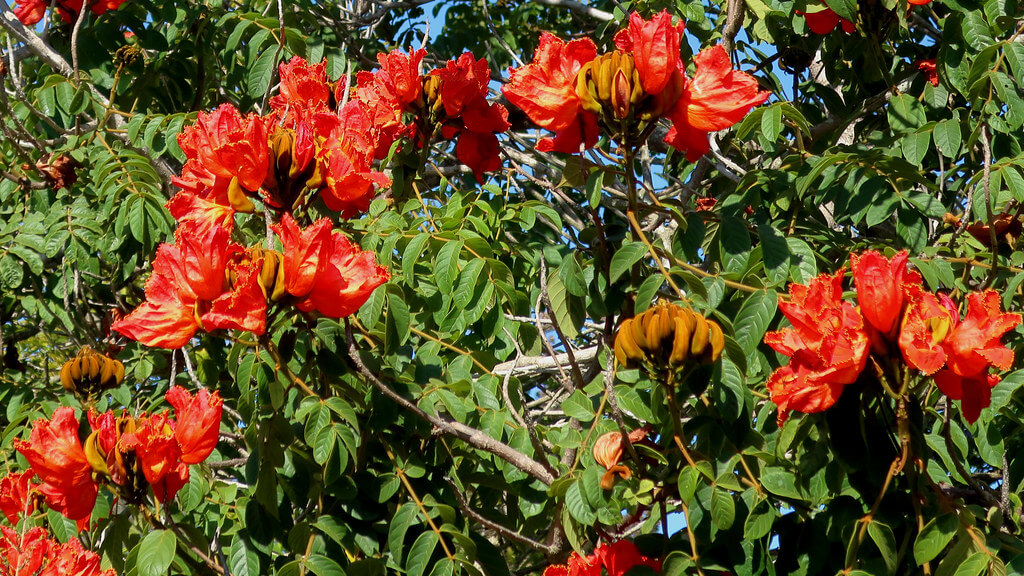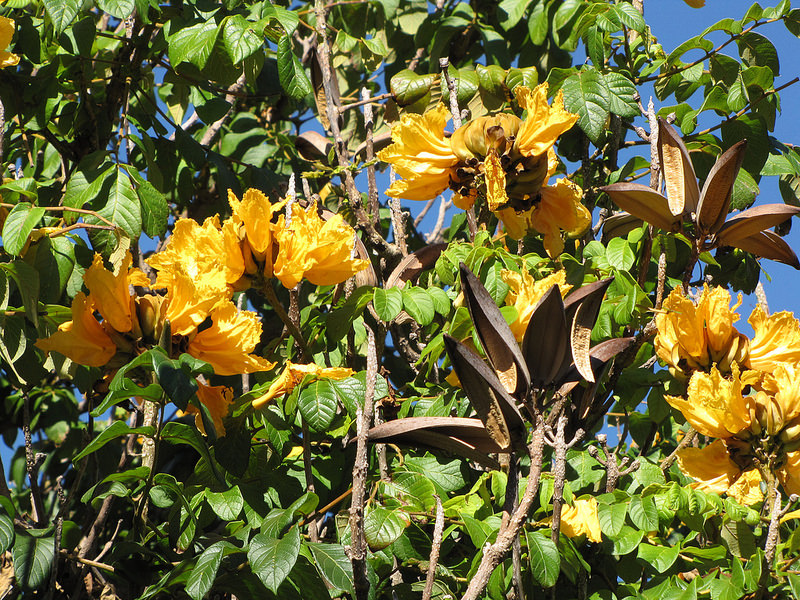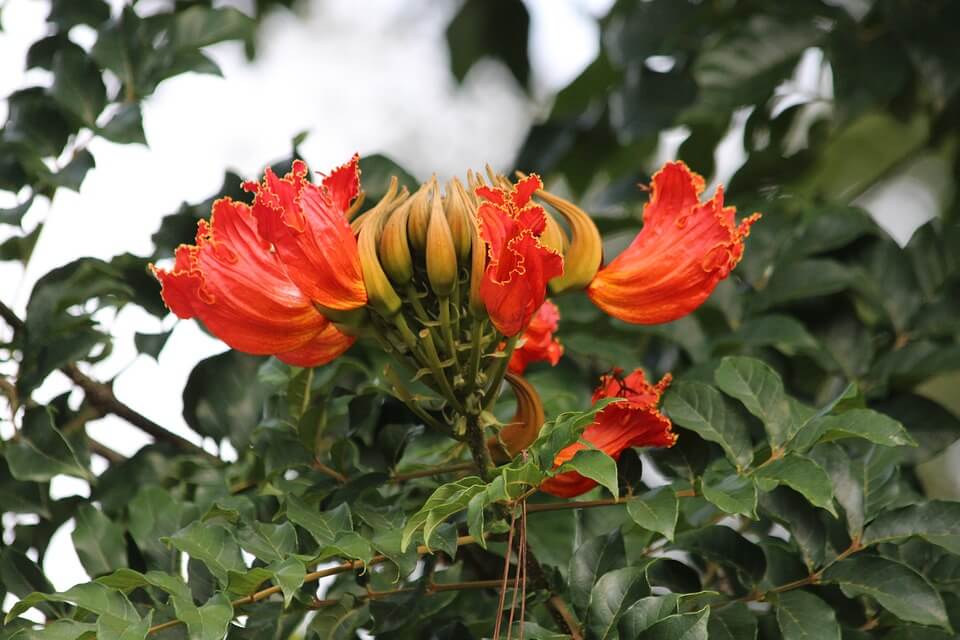
African Tulip
African Tulip (Spathodea campanulata) was imported to Hawai‛i in 1871 by Dr. William Hillebrand. In the early 1900s, 30,000 trees were planted throughout the state for reforestation efforts. Aerial seeding occurred in the 1920s. The Division of Forestry and Wildlife of the Hawai`i Department of Land and Natural Resources has designated this species as one of Hawai’i’s Most Invasive Horticultural Plants.
African Tulip spreads rapidly in mesic to wet areas, invading pastures and mature forests. The prolific seeds germinate quickly, reaching reproductive age in a few years. The dense thickets can crowd native vegetation in forests and waterways. The tree grows up to 6 feet per year, is shade tolerant, and resprouts after cutting. The seeds are numerous, wind-dispersed, can contaminate other potted plants and they can float on water. There are major infestations tucked away in almost every rainforest valley along the northern and eastern slopes of Kaua’i, O’ahu, Hawai’i, and East Maui.
Impacts:
- Spreads rapidly in mesic to wet areas, invading pastures and mature forests
- Seeds germinate quickly and form understory thickets
- Crowds out native vegetation in forests and waterways
- Brittle branches are a safety hazard
Description:
- A tall tree up to 75 ft
- 3-19 leaflets (5 in long by 3 in wide) form the compound leaves
- Scarlet-orange, showy flowers grow in clusters (about 4 in high and 8 in across) year-round; fruit clusters are upright
- Canoe-shaped seed capsules up to 10 in long

year-round.


Photos: Forest & Kim Starr
Controlling African Tulip
Physical control: Physical removal is difficult. African Tulip coppices vigorously after cutting. Cut mature trees and repeat as needed. Multiple stems will regrow from the stump. Dispose of green waste to prevent vegetative reproduction. If the tree is hazardous, call an arborist for assistance.
Chemical control: Application method- Incision Point Application (IPA)
